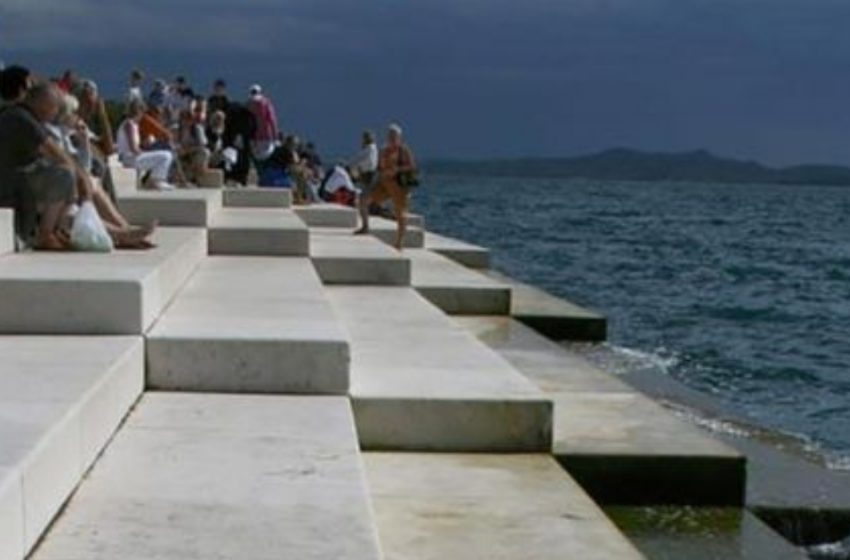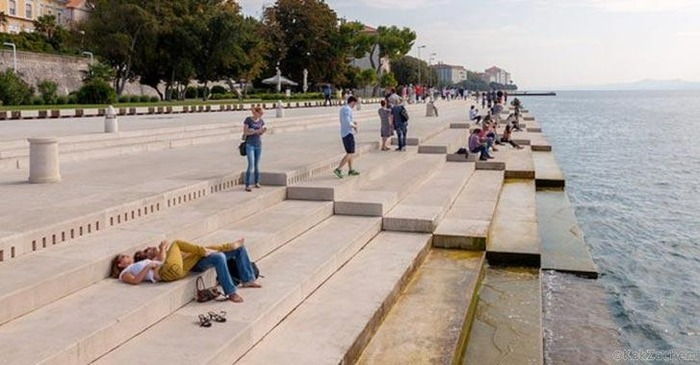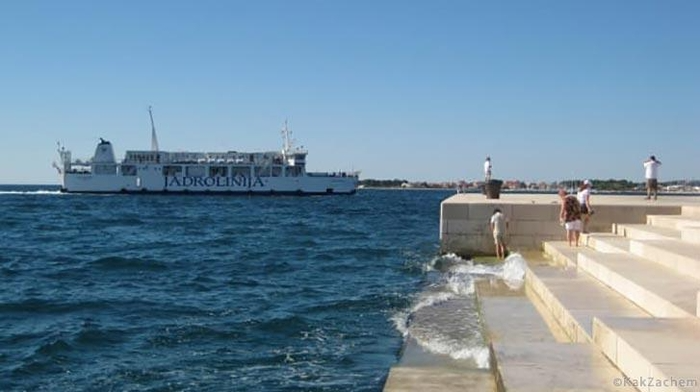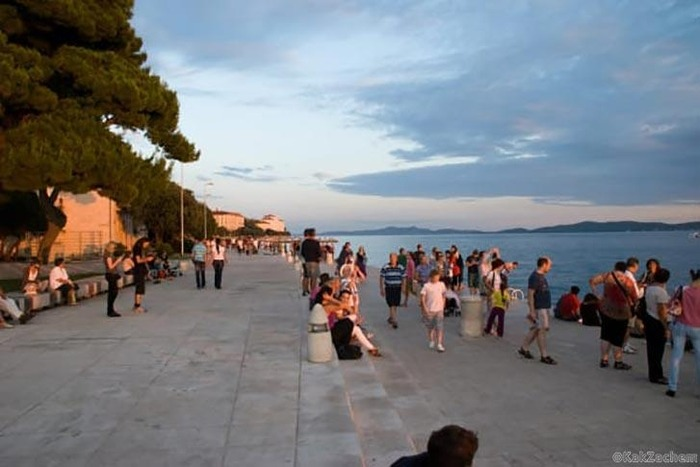At first glance, they look like ordinary cement steps leading into the Adriatic Sea. But wait until the waves begin their symphony—suddenly, those steps transform into one of the world’s most mesmerizing musical instruments, played not by human hands, but by the sea itself.
Welcome to Zadar, Croatia, home to the Sea Organ, a breathtaking architectural and artistic wonder that blends nature, music, and design into an unforgettable experience.

A Symphony Created by the Ocean
Unveiled to the public in 2005, the Sea Organ has since become a must-visit attraction for tourists and music lovers alike. Unlike conventional instruments, this one doesn’t require a musician—its melodies are entirely composed by the movement of the sea.
So, how does it work? Beneath the stone steps lies a network of resonance chambers and pipes. As waves roll in, air is pushed through these pipes, producing harmonic notes that rise from the steps above. The ever-changing rhythm of the ocean means the music is never the same twice, creating an experience that is both peaceful and unpredictable.
Video: Zadar Sea Organ
The Visionary Behind the Sound
The genius responsible for this extraordinary creation is Nikola Bašić, a renowned Croatian architect. Following the devastation of World War II and the conflicts of the early 1990s, Bašić sought to breathe new life into Zadar’s coastline. Instead of just rebuilding, he envisioned a space that would reconnect the city with the sea—not just visually, but through sound.
The result? A 78-foot-long (24-meter) sound sculpture that turns the power of nature into a meditative, otherworldly experience.
How the Sea Organ Works: Nature as the Composer

The Sea Organ’s structure may seem simple, but its design is remarkably sophisticated. Here’s how it creates its unique melodies:
- The Steps Act as an Entryway – The organ consists of seven underwater pipes, each tuned to a different note. The waves enter through small openings at the bottom.
- Water and Air Create Pressure – As the sea moves in and out, it forces air through the pipes.
- Resonance Chambers Shape the Sound – Each pipe is connected to a chamber that amplifies the sound, creating deep, melodic notes.
- Music Rises Through the Steps – The sound escapes through holes in the upper steps, allowing visitors to sit and listen to the constantly evolving symphony.
Since the intensity of the waves controls the volume and tone, the Sea Organ’s music varies throughout the day. Gentle waves produce soft, melodic whispers, while strong tides create dramatic, powerful tones.
A Healing Soundscape for a City with a Tragic Past

Zadar has seen its fair share of destruction, particularly during World War II and the Croatian War of Independence in the 1990s. But today, the Sea Organ serves as a symbol of peace and renewal.
For many locals, the organ’s ethereal music represents a moment of serenity—a place to reflect, unwind, and appreciate the beauty of nature. Tourists, too, are enchanted by its calming sounds, often sitting for hours on the steps, mesmerized by the harmony of sea and sound.
Why You Need to Visit the Sea Organ

If you’re planning a trip to Croatia, Zadar should be at the top of your list—and here’s why:
- Unmatched Sunsets – The Sea Organ is located along the Riva promenade, offering one of the best sunset views in Europe. Watching the sun dip below the horizon while listening to the organ’s music is a magical experience.
- A One-of-a-Kind Attraction – There are no other sea organs like it in the world. While some similar concepts exist, none match the scale and complexity of Zadar’s masterpiece.
- A Relaxing Escape – Whether you’re looking for a peaceful moment alone or a romantic spot to share with a loved one, the Sea Organ’s soothing sounds create the perfect atmosphere.
Pair It with Another Bašić Masterpiece: The Sun Salutation
Just steps away from the Sea Organ is another awe-inspiring creation by Nikola Bašić—the Sun Salutation. This 22-meter-wide circular installation is embedded with solar panels that absorb sunlight during the day and produce a dazzling light show at night.
As the sun sets, the Sun Salutation comes alive with vibrant colors, creating a mesmerizing dance of light that perfectly complements the melodies of the Sea Organ. Together, these two installations celebrate nature’s beauty in a way that no other attraction in the world does.
A Timeless Tribute to the Sea

While cities around the world invest in modern architecture and technology, Zadar has found a way to let nature be the artist. The Sea Organ is more than just an attraction—it’s a testament to the power of creativity, sustainability, and harmony between humans and the environment.
So, if you ever find yourself in Zadar, take a moment to sit on the stone steps, close your eyes, and let the waves compose their symphony just for you. It’s a sound that will stay with you long after you’ve left.
Final Thoughts
The Sea Organ of Zadar is not just an architectural wonder—it’s a reminder of how art, nature, and music can come together in perfect harmony. In a world where technology often dominates our experiences, this breathtaking instrument invites us to slow down, listen, and appreciate the simple yet powerful beauty of the sea’s natural rhythm.
So next time you think those stone steps are just ordinary, wait until the waves play their tune—you’ll realize they’re anything but.


